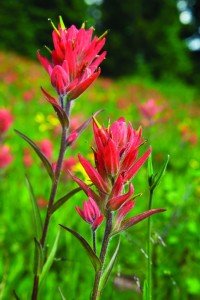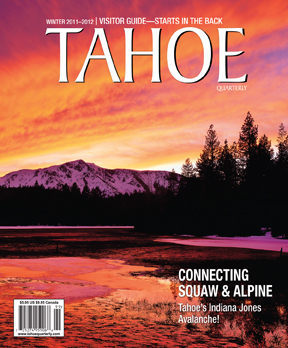Natural Rhythms: Summer is the season of love for local flora and fauna
Summer is when plants and animals go about the business of reproduction. To that end, they employ a dazzling array of communication techniques, appealing to all of our (and hopefully potential mates’) senses in the process. Here is a sampler of the summer’s great communicators.
Songs and sounds
Territorial vocalizations attract mates and ward off potential competitors, but those performances aren’t restricted to birds and amphibians. For example, most readers have heard the rattling trill of Douglas squirrels in the forest or the incessant chirping of a ground squirrel or chipmunk. Sometimes these are warning calls, but more often they are directed at one another. Studies have demonstrated that squirrels can recognize their relatives by their unique territorial trills. Even the smallest rodents let their songs be heard.
Not all animal sounds are vocal. Consider the night-piercing stridulations of katydids, made by rubbing the bases of their front wings together. Many of our common birds make nonvocal territorial sounds as well. During the twilight hours and early morning, Wilson’s snipe can be heard displaying over wetlands like the Upper Truckee, Taylor Creek or Martis Creek marshes. The snipe repeatedly climbs high and dives back down, air winnowing through its flared tail in a sound often mistaken for a boreal owl. Also heard during twilight, male common nighthawks occasionally make a “booming” sound quite different from their nasal “peent” calls. This boom is also created by feathers during a dive, and is reminiscent of a bullfrog.
Color and pattern
Color and pattern are perhaps the most appealing of the forms of communication for us, visual creatures that we are. At the basest level, they help animals recognize members of their own species. When pronounced, as in very bright breedingplumaged birds, they express vigor and genetic desirability. The classic example of this sexual selection is the peacock, but closer to home we have, for example, the white, orange and brilliant blue of the male lazuli bunting. Look for lazuli buntings singing in high-elevation meadows and chaparral in mid-summer; the top of Ward Canyon and the road to Relay Peak are easy places to find them.
Color and pattern are also important for communicating with pollinators. Many insects, most notably bees, cannot see red. Thus, red flowers typically are pollinated by hummingbirds, and therefore possess a shape that suits their feeding style. Scarlet gilia, Indian paintbrush and crimson columbine are great examples. The closely related alpine columbine has much longer spurs that cannot be reached by the bills of hummingbirds. Instead, this flower is whitish, fragrant and produces nighttime nectar to attract the longer tongues of white-lined sphinx moths. Flowers that prefer pollination by bees keep their color palette toward the violet (and even ultraviolet) end of the spectrum, and commonly employ visual landing strips to help orient the bees properly.
Fragrance and flavors
As suggested above, plants can use fragrance and flavors to attract pollinators. Hummingbirds are not swayed by scent, but nectar is something they clearly relish. Odors will attract most other insects, however, and many fragrances pinpoint certain pollinator predilections. Butterflies tend toward subtler scents, while bees prefer a robust, sweet aroma. Many of our strongest smelling flowers are pollinated by moths, flies or even beetles. Corn lily is visited by a great variety of insects, including many longhorned beetles, though the pollen is reported to be toxic to most insects. A spectacular mothpollinated flower is the two- to eight-foot tall Washington lily, which can be found among chaparral slopes and pine forests in July and August. Once successful pollination has resulted in fruit, many plants use fragrance, flavor and bright colors to attract animals to fertilize and disperse their seeds across the landscape, berries being the most popular vessel. Many of the more conspicuous fruits ripen in late summer, when thimbleberries make a tasty trailside diversion in moist forest understories throughout Tahoe. By Will Richardson. TQ
Category: Natural World, Outdoors







